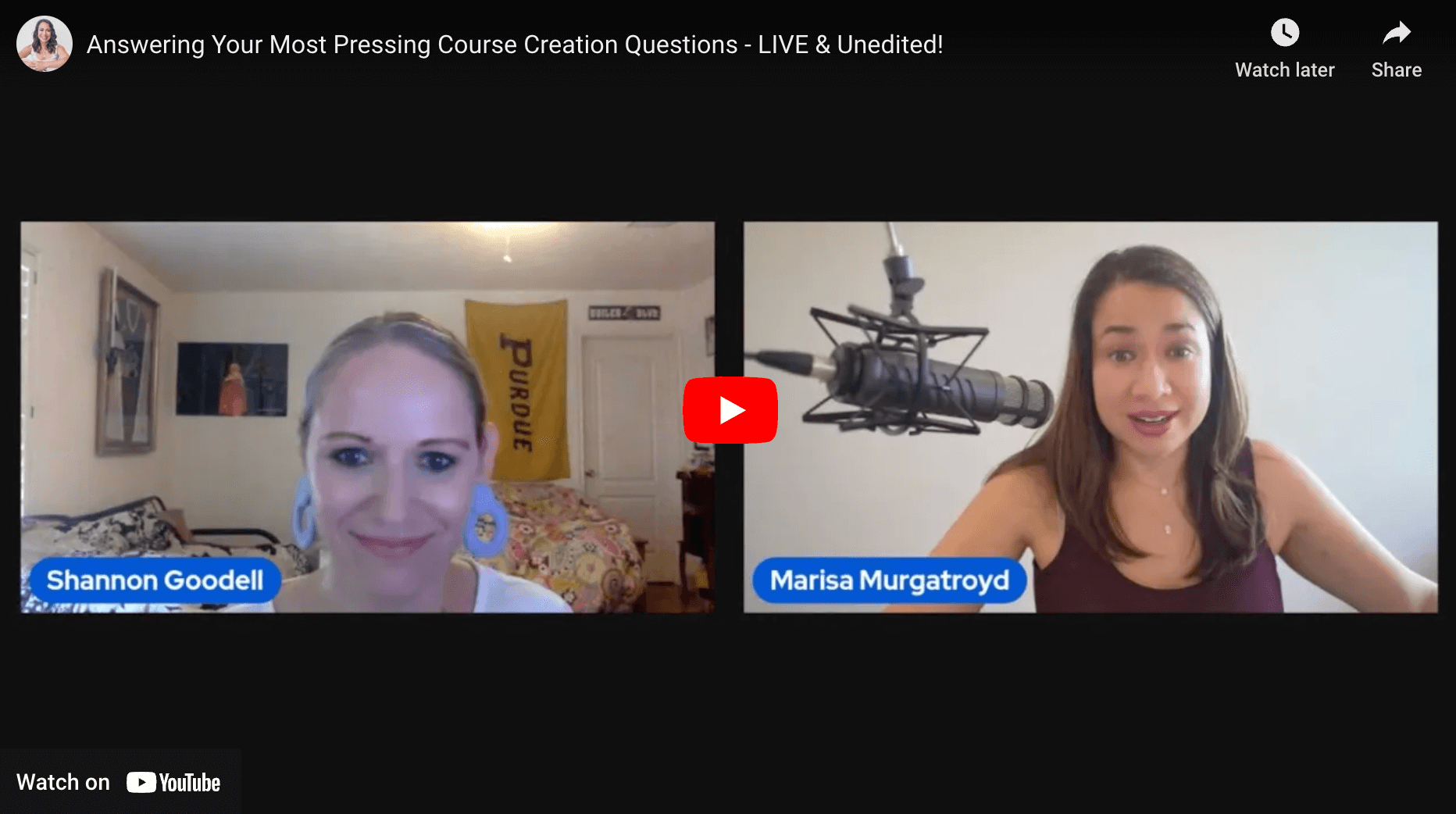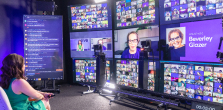Mobile learning, or mLearning, is transforming how we learn.
It’s bridging gaps, making education accessible and injecting fun into the learning process. And we’re not just talking about eBooks or online quizzes…
We’re talking about a whole new world of AI-driven, immersive, interactive learning experiences.
In this post, I’m going to help you cut through the noise and discover the ins and outs of mobile learning.
Let’s dive in.
We’ll start with a definition…
What is Mobile Learning?
In the simplest terms, mobile learning is education that takes place via mobile devices like smartphones and tablets. No bells and whistles, no complicated jargon — just learning at your fingertips.
With mLearning, education isn’t confined to the four walls of a classroom or the clutches of a fixed schedule. It’s learning that can happen anywhere and at any time.
In a world where our mobile devices are almost like extensions of our hands, mLearning is education that isn’t confined to the four walls of a classroom or the clutches of a fixed schedule.
It’s learning that can happen anywhere and at any time.
Advantages of Mobile Learning
It seems counterintuitive, doesn’t it?
How can a device that’s often seen as a distraction be an effective learning tool? The answer lies in utilizing its potential for accessibility, flexibility, and convenience — effectively transforming it into a personal pocket-sized tutor.
Accessibility
You’ve probably experienced the frustration of trying to fit in a class or a course into your already jam-packed schedule.
Mobile learning eliminates this concern. Educational content is accessible 24/7, right in your pocket.
Flexibility
Learners are not restricted by a rigid class schedule.
They can absorb the material at their own pace, rewind, pause or revisit content, making learning more learner-centered.
Convenience
Think about the freedom of learning anywhere, be it in a crowded subway or a quiet park.
With mobile learning, the world is your classroom.
Learning on-the-go
Mobile learning has taken the phrase “time is money” to heart. It understands the scarcity of time and lets learners utilize even the shortest time slots.
Got a spare 15 minutes between meetings?
That’s a perfect window to brush up on a topic.
Types of Mobile Learning
The types of mobile learning are as diverse as learners themselves, catering to different needs, preferences and learning styles.
From podcasts that fill your morning runs with knowledge to interactive games that make learning a fun challenge, mLearning dons many masks.
Mobile Apps for Education
You’re already familiar with apps, right?
You’ve got one for socializing, shopping, booking a ride, and yes, now, learning too.
Educational apps are all the rage, offering everything from language courses to coding tutorials.
Responsive Websites
Not all learning needs an app.
Some websites are designed to play nice with your mobile screen, giving you a seamless learning experience without any download required.
Podcasts for Learning
We live in the golden age of podcasts.
A great educational podcast can turn a dull commute into a lively lecture. It’s like being in an auditorium, except you might be running on a treadmill or cooking dinner while you listen.
Videos and Multimedia
We’ve all ended up in the YouTube rabbit hole at some point, haven’t we?
But when used strategically, videos can be a powerful learning tool, bringing concepts to life in a visual and engaging way.
Interactive Quizzes and Mobile Games
Who said quizzes are only for the classroom?
Interactive quizzes and mobile games can turn learning into a fun challenge. These aren’t your traditional textbook quizzes, mind you. These are usually interactive, dynamic and way more fun.
Mobile Learning Technologies
Hang on to your hats, folks. We’re about to venture into the technology that drives mobile learning.
From Learning Management Systems (LMS) to AI, let’s simplify the technical side of things and see how these tools shape mLearning.
Learning Management Systems (LMS):
Picture a virtual classroom that tracks your progress, tailors content to your needs and facilitates interaction.
That’s what an LMS does, acting as the backbone of many mobile learning platforms.
Mobile Apps:
Mobile learning apps are like your personal tutors, available at a tap.
They bring together content, interactivity and personalized learning pathways.
Augmented Reality (AR):
Remember the frenzy when Pokemon Go was released? That was a taste of AR.
In mobile learning, AR can superimpose digital information onto your physical environment, adding a layer of interactivity and engagement.
Imagine learning about the solar system by actually seeing the planets orbiting around you.
Artificial Intelligence (AI)
A relative newcomer to mLearning, AI is changing things as we know it (and not just in mobile learning, but everywhere).
AI tailors learning content based on individual learners’ behavior and performance, making learning truly personalized.
It can provide real-time feedback, turn data into actionable insights for educators and even predict learner outcomes.
From AI-powered chatbots facilitating interactive learning to algorithms recommending customized learning paths, AI is shaping an engaging, dynamic mLearning environment.
It’s a smart shift, turning the “one-size-fits-all” model on its head.
Best Practices for Mobile Learning Design
Alright, we’ve dipped our toes into the what and why of mobile learning.
But what about the how?
How do you craft a mobile learning experience that’s more than just squishing a textbook onto a tiny screen?
After all, creating an effective mobile learning design isn’t just about making content accessible on a mobile device…
It’s about adapting the learning experience to the mobile context and embracing its potential for interactivity and personalization.
Here are the best practices to keep in mind:
Bite-sized Content
Ever tried to eat an entire pizza in one bite? Doesn’t work well, does it?
The same goes for learning.
Break down complex concepts into manageable pieces.
This makes the content more digestible and helps keep cognitive overload at bay.
Optimize for Different Screen Sizes
A desktop screen is not the same as a mobile screen and it shouldn’t be treated as such.
Good mobile learning design ensures that content looks great and functions well on screens of all sizes.
Incorporate Interactive Elements
Monologues can be boring, and nobody wants to listen to a one-sided conversation.
Interactive elements like quizzes, discussions and tasks can turn passive learning into an active experience.
User Engagement Strategies for mLearning
Engaging users is not just about getting their attention.
It’s about sparking their curiosity, fueling their motivation and creating an environment where they want to learn.
But how can we spice up mLearning to keep users hooked and hungry for more?
Let’s explore practical, proven strategies to keep your learners hooked, line and sinker.
Gamification
Think back to your school days. What was more exciting — a textbook or a game of tic-tac-toe?
Introducing game elements like scores, levels and badges can make learning more fun and rewarding.
Social Learning Features
We’re social creatures at heart, aren’t we?
Features like discussion forums, peer reviews and social sharing can bring a sense of community and collaboration to mobile learning.
Personalized Content
Not everyone likes the same flavor of ice cream.
Personalizing content to meet the learner’s needs, interests and learning style can make the learning experience more relevant and engaging.
Accessibility and Inclusivity
Like a well-planned party, mobile learning should be an experience where everyone feels welcomed, accommodated and included.
Here are things to keep in mind so no one’s left out.
Accommodating Disabilities
Picture this:
You’re trying to navigate a maze, but you’re wearing a blindfold. It’d be a struggle, wouldn’t it? The same goes for learners with disabilities.
Mobile learning must incorporate assistive technologies and adhere to accessibility standards to ensure everyone can participate.
Bridging the Digital Divide
It’s something you take for granted if you live in an area of the world where fast Wi-Fi is available everywhere you go, but those with limited internet access can feel excluded from mobile learning.
Solutions such as offline access and low-bandwidth-friendly design can help bridge this digital divide.
Multilingual Support
Stepping beyond borders and breaking down language barriers, mobile learning opens up global learning possibilities.
Providing multi-language support in mLearning platforms ensures content is accessible to diverse groups of learners, no matter where they’re from or what language they speak.
It’s like a universal translator, bridging cultural and linguistic divides.
This approach fosters inclusivity and widens participation, letting learners navigate through their learning journey in a language they’re comfortable with.
Integration with Traditional Learning
In the orchestra of education, mobile learning is not a soloist, but a key player in the ensemble.
It harmonizes with traditional learning, amplifying its strengths and filling in its gaps.
It’s not meant to replace traditional learning but to enhance it.
Here’s how:
Supporting Blended Learning
A smoothie made only of a single fruit wouldn’t be as tasty, would it?
Just like a smoothie, blended learning combines different modes of instruction to create a richer learning experience.
Mobile learning can serve as a versatile ingredient in this blend, complementing and enhancing traditional classroom instruction.
Reinforcing Learning
Think about the last time you learned a new skill.
Didn’t practicing it over time help you improve?
In the same way, mobile learning can support practice and repetition, helping to reinforce concepts learned in traditional settings.
Facilitating Self-Paced Learning
Think of it as an anytime, anywhere library of knowledge — that’s the power of integrating mobile learning with traditional education.
It enables self-paced learning, offering the flexibility to learn at one’s own speed.
Learners can revisit the course material on their mobile devices whenever they want to consolidate understanding or clarify doubts.
Mobile Learning in the Workplace
Mobile learning in the workplace is like the Swiss Army Knife of professional development: compact, versatile and always handy when you need it.
Let’s look at a few reasons why companies are embracing this modern learning approach to professional development:
On-the-Job Training
Consider the last time you tried to assemble furniture without a guide.
Frustrating, isn’t it?
Mobile learning offers easily accessible, step-by-step training for employees, turning complex tasks into an easy-to-follow roadmap.
Continuing Professional Development
Remember the thrill of winning a game?
That’s the feeling of mastering a new skill.
Mobile learning allows for ongoing professional development, making skill acquisition a convenient and rewarding process.
Encouraging Collaboration and Knowledge Sharing
Mobile learning in the workplace isn’t just about individual training…
It’s also a tool to foster collaboration and knowledge sharing among employees.
With the help of social learning features in many mobile learning platforms, employees can share insights, discuss ideas and solve problems together, regardless of their geographical location.
It’s this aspect of community learning that can lead to innovation and improved performance across the board. It’s like having a meeting room in your pocket — ready for spontaneous brainstorming sessions and mutual learning whenever inspiration strikes.
Challenges and Solutions
Like any pioneering technology, mLearning faces its own set of hurdles.
Let’s dive into a few of them…
Technological Limitations
Think about using an old map to navigate a constantly changing city.
Not the best idea, right? Similarly, outdated technology can hinder mobile learning.
The solution? Regular updates and maintenance to keep your learning tools sharp and ready.
Security and Privacy Concerns
Navigating the waters of security and privacy can be a challenging aspect of implementing mobile learning.
From protecting sensitive company information to ensuring users’ personal data is safe, it’s a balancing act that requires thoughtful planning.
However, solutions do exist.
Advanced encryption techniques, two-factor authentication and stringent privacy policies can help protect both company and user data.
So, too, can educating learners about best practices for safeguarding information can go a long way toward maintaining a secure mobile learning environment.
Facilitating Consistent User Engagement
Keeping learners consistently engaged can be a hurdle in mobile learning.
The plethora of distractions on mobile devices, from social media notifications to incoming emails, can break a learner’s concentration.
So how do we keep learners hooked amidst all this noise?
One solution is the use of gamification techniques (as discussed earlier).
By incorporating elements like leaderboards, badges and achievement levels, mobile learning can transform into a captivating experience.
The Future of Mobile Learning
One thing is certain…
The mobile learning landscape won’t stand still.
Innovations in technology and pedagogy are fueling the mLearning train, shaping a future that’s as promising as it is dynamic.
The integration of AI and machine learning with mobile learning is a notable trend.
Imaging learning experiences tailored to the individual needs of learners, adaptive content that changes according to learner progress, and automated support throughout the learning journey.
Sounds like science fiction, right? But it’s not. It’s simply mLearning evolving with AI and machine learning.
Immersive technologies are stepping into the limelight too.
Virtual reality (VR) and augmented reality (AR) aren’t just buzzwords in the gaming industry. They’re gateways to immersive, engaging learning experiences.
Imagine dissecting a virtual frog in biology class or walking through the ruins of ancient Rome in a history course. With VR and AR, these aren’t pipe dreams but palpable future possibilities for mLearning.
There’s more…
The Internet of Things (IoT) is weaving its magic into the mLearning fabric. The IoT could enable a seamless learning ecosystem where learning isn’t confined to an app but is part of an interconnected web of devices.
Of course, despite these promising trends, the future of mLearning isn’t without challenges.
We touched on some of them earlier…
Digital equity, privacy concerns, data security — these are real issues that need addressing. And let’s not forget the human element. The teacher-student relationship is vital and mLearning needs to balance technology with the inherently human aspect of learning.
Embracing the Future with Mobile Learning
So, where does that leave us? Excited? Cautious? Maybe a bit of both?
That’s okay.
The future of mobile learning is a journey, and as with all journeys, there will be exciting discoveries and unexpected challenges. What’s important is to keep learning, keep evolving and embrace the change.
Hopefully, this post has given you the insights and the reassurance you need to take that journey. Mobile learning isn’t just a trend — it’s shaping the future of education and training in dazzling ways.
But, time to turn things over to you…
What do you think of mobile learning? What’s been your experience so far?
Let me know in a comment below!
But before you go, I’ve got a HUGE announcement!
Doors to the Experience Product Masterclass are now OPEN!!!
This is your opportunity to change your life (and the lives of others)…
… with an Experience Product, the new type of high-impact online course that sells better, is more profitable, and makes students more successful.
The Experience Product Masterclass is your opportunity to work with me and my coaches directly, to launch your Experience Product quickly, easily & profitably.
(I only do this once a year, and NOW is your chance.)
Inside EPM you’re getting everything you need to virtually guarantee your success:
- A personal coach with unlimited email access (Free!)
- A collection of powerful AI-tools to help you create, build, market & launch (Free!)
- A completely done-for-you course or membership site build worth $5K (Free!)
- Plus an absolutely HUGE bonus that’s only available TODAY
Doors close at 11:59pm PT on October 19th… and you won’t be able to get in again until this time next year… so don’t miss out! Enroll today. 🙂


























Leave a Comment